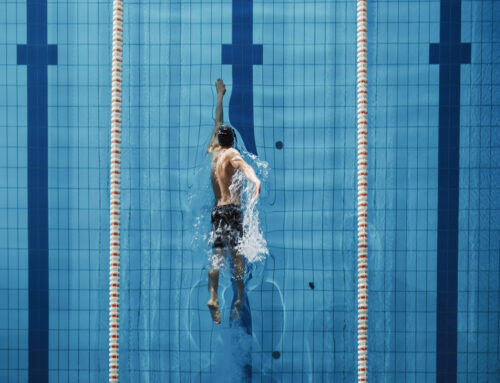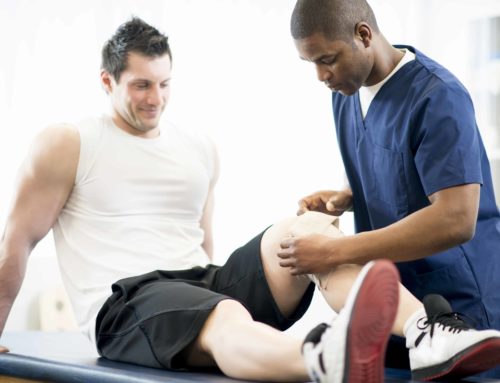US News & World Report
February 2018
Ice dancing wasn’t just Krista Weyhing’s passion – it was her refuge from the series of tragedies she endured during the last half of 2016 and early 2017. In that time, the teenager’s beloved grandfather succumbed to pancreatic cancer, two friends committed suicide and two family dogs died.
In early 2017, Weyhing, of Louisville, Kentucky, began training in earnest for a season of national ice dancing competitions. She’d been eating a healthy diet featuring shrimp, fish, salads, nuts and cheese. Determined to lose a few pounds, Weyhing cut out carbohydrates and sweets. “I had a need for control,” Weyhing, 18, says. “I saw it as a way to attain success, to feel everything was going to be OK.” By the summer, Weyhing was starving herself. On a given day, she’d eat a couple teaspoons of microwaved egg whites and some raw vegetables. She started purging, making herself throw up what little food she consumed.
Last July, after completing a three-minute program during a competition, Weyhing collapsed in her coach’s arms. By the end of the month, she was in The Renfrew Center, a treatment facility for eating disorders in Coconut Creek, Florida. (Renfrew has 19 treatment centers in 13 states nationwide.) After seven weeks of intensive therapy, Weyhing left the facility in recovery from her eating disorder. “I’m definitely in a place where I want to get better,” she says, talking openly about her struggle in the hope that others suffering with an eating disorder will be encouraged to seek professional help. She attends weekly support group meetings with about 20 teenage girls and young women in recovery from eating disorders.
Olympians’ Eating Disorders
The problem of eating disorders among young athletes is getting a flurry of attention thanks to the Pyeongchang Winter Olympics unfolding in South Korea. The 2018 Games are producing dazzling displays of athleticism, but they’re also a reminder that many young athletes at all levels of their sport grapple with eating disorders. Several high-profile Olympic athletes, such as U.S. figure skater Adam Rippon and Canadian figure skater Gabrielle Daleman, have recently spoken publicly about their struggles with an eating disorder. Rippon told The New York Times that in 2016, he subsisted on a daily regimen of three slices of whole grain bread topped with small amounts of a butter substitute. He drank three cups of coffee with each serving of bread, enhancing the beverage with six packs of a non-sugar sweetener.
At some point in their lives, 20 million women and girls and 10 million men and boys will be affected by an eating disorder, says psychologist and registered nurse Lori A. Schur, who’s the clinical training director of the Eating Disorders Medical Stabilization Program at Torrance Memorial Medical Center in Torrance, California. Eating disorders are serious and potentially fatal illnesses, according to the National Institute of Mental Health. Common eating disorders include anorexia nervosa, in which people restrict their eating dramatically, even when they’re hungry; bulimia nervosa, characterized by episodes of eating large amounts of food followed by vomiting, fasting, excessive exercise and/or excessive use of laxatives; and binge eating disorder, in which people frequently gorge on large quantities of food.
Jenny Carr, who competed as a Division 1 skier at the University of New Hampshire in the early 2000s and struggled at the time with bulimia, notes that research suggests athletes are about three times more likely to develop an eating disorder than non-athletes, and female athletes are at greater risk than male competitors. “What’s important to note is that this disorder is more widespread than professional or Olympic athletes, reaching young people with females typically being more susceptible to the disorder,” says Carr, an anti-inflammatory health coach in Jackson Hole, Wyoming. Carr says she healed from her bulimic disorder while still in college and has been a healthy eater since.
Female Division 1 Athletes At Risk for Eating Disorders
There’s no way of knowing exactly how prevalent eating disorders are among young athletes, says Nadine Kaslow, psychologist for the Atlanta Ballet and vice chair for faculty development in the department of psychiatry and behavioral sciences at Emory University in Atlanta. Research suggests that more than a third of female Division 1 NCAA athletes had attitudes and symptoms putting them at risk for anorexia, according to the National Eating Disorders Association. A 2014 study in the Psychology of Sport and Excellence found that 13 percent of female figure skaters who competed at an elite level had an eating disorder. Among teens and young men and women, athletes who compete in sports in which being lean is widely viewed as a competitive advantage are at greatest risk for developing an eating disorder, says Emily Slager, a licensed mental health counselor at Walden Behavioral Care in Waltham, Massachusetts.
Generally, athletes of both sexes who compete in individual sports are more at risk of developing an eating disorder than those who engage in team sports, Slager says. This includes female athletes in sports such as gymnastics and figure skating, as well as male athletes who compete in sports like wrestling, where competitors are divided by weight class. The same is true for long-distance runners.
Finding Help
Here are four strategies to help athletes who are struggling with an eating disorder or feel they’re at risk of developing one:
Understand the potentially deadly nature of an eating disorder. Don’t make the mistake of rationalizing bulimia or another eating disorder as a condition that’s not serious, says Dr. Don Mordecai, a child psychiatrist and national leader for mental health and wellness at Kaiser Permanente in Oakland, California. An eating disorder can rob a young athlete of the nutrients he or she needs, which can lead to a deterioration in bone health and hairline fractures; dehydration; heart failure and death. In 1988, a judge told U.S gymnast Christy Henrich that she needed to lose weight to make the Olympic team. She developed anorexia and died in 1994 at age 22. The 4-foot-10-inch Henrich weighed about 60 pounds when she died of multiple organ failure caused by eating so little that her body was deprived of essential nutrients.
Know you’re not alone, and reach out for help. When she was struggling with an eating disorder, Weyhing often felt alone. Once she was in treatment, she connected with other female teenagers and young women working their way toward recovery from an eating disorder. Staying connected with others who are fighting an eating disorder helps keep her on the right path. “There are so many people I can text who I know will understand how I feel and give me encouragement,” Weyhing says. When she spoke to a group of freshmen students at her school about her battle, she told them, “You are strong, but to fight certain things, you need someone at your side. It doesn’t make you weak to reach out for help.” Reaching out to your parents or another trusted adult, like a coach, is a good way to start, Weyhing advises. You can also confide in trustworthy friends or seek help from NEDA.
Consider professional help. Seeking support from people close to you or from NEDA’s help line can be a step toward getting professional help, says Rachael Rose Steil, who struggled with an eating disorder when she ran cross country and track for Aquinas College in Grand Rapids, Michigan, several years ago. In January 2012, Steil told her mom, then a few month’s later, a teammate. At her mom’s suggestion, Steil went to an eating disorder support group. “That broke the denial I had about my own eating disorder, and from there, I agreed to see a therapist and then an eating disorder dietitian,” Steil says. In 2013, she dropped out of track to devote herself fully to her recovery. Steil still lives in Grand Rapids and writes about sports and eating disorders for her website, runninginsilence.com. She’s also written a book about her experience, “Running in Silence: My Drive for Perfection and the Eating Disorder That Fed It.” The NEDA helpline, at www.nationaleatingdisorders.org, includes a 1-800 number and an online chat option to reach trained volunteers. There’s also a text option for crisis situations.
Look for a health care provider who has experience working with athletes. Slager once worked with a patient who was a competitive runner and had gotten this advice from a therapist: “Stop running.” The patient left the therapist. Athletes with eating disorders should try to find health care providers who understand that being an athlete is an important part of your life, she says. Try to find heath providers who have a holistic approach that includes working with a therapist, medical doctor and nutritionist to recover.





